In the realm of skincare treatments, both chemical peels and laser skin rejuvenation can help improve your complexion, reducing the signs of aging, and helping to jumpstart your summer makeover. But which option is right for you? This will depend on various factors, including the nature of the aesthetic issue you wish to target, your comfort level, the time you want to invest in your treatment, and the overall cost you’re willing to consider. Below we will explore both processes to have a better idea of what to expect going forward.
What is the difference between a chemical peel and laser skin rejuvenation in terms of process?
A chemical peel is performed by applying a solution to the skin that exfoliates imperfections. Chemical peels are formulated as mild, medium, or deep and can be customized to your preferences. Laser skin rejuvenation involves short bursts of potent laser energy delivered to the target areas.
What are the different conditions addressed by a chemical peel and laser skin rejuvenation?
Chemical peels are ideal for reducing fine lines, combating acne scarring, reducing hyperpigmentation and sun damage, and improving the skin’s texture and tone. However, chemical peels cannot address deep wrinkles or skin laxity. On the other hand, laser therapy can tighten the skin in addition to reducing sun damage and facial scarring. The laser energy stimulates the body to regenerate collagen and elastin, proteins that lead to a naturally firm and youthful complexion.
What level of intensity does each treatment provide?
Chemical peels can be light (made with alpha hydroxy acid), medium (made with trichloroacetic acid), or intense (made with phenol). Light peels can be performed over your lunch break, while deep peels will need more recovery time.
Laser treatments can be either ablative or non-ablative. Ablative procedures remove the outermost layer of damaged skin, eradicating wrinkles and dark spots. Non-ablative laser solutions are minimally invasive and simply boost the body’s supply of skin-tightening compounds such as collagen and elastin.
What about recovery times?
Treatments such as light peels and non-ablative laser resurfacing come with shorter downtimes, but the tradeoff is that they may need to be repeated more often to maintain your results.
In general, chemical peel outcomes last anywhere from 1-2 months for a mild peel to 4-6 months for a medium peel. A deep peel, however, can continue to impress for as long as ten years. Results from laser treatments typically last 3-5 years.
What is the takeaway?
Both chemical peels and laser skin rejuvenation are excellent ways to pamper yourself as the world prepares to reopen after the long pandemic. Each treatment has unique advantages that can help halt the aging process and ensure you look as youthful and energetic as you feel on the inside. Call us at JUNO Medi-Spa today to schedule your private consultation. During this initial session, we will thoroughly evaluate your complexion and make a recommendation for either a customized peel or a strategic laser treatment targeting your trouble zones.



